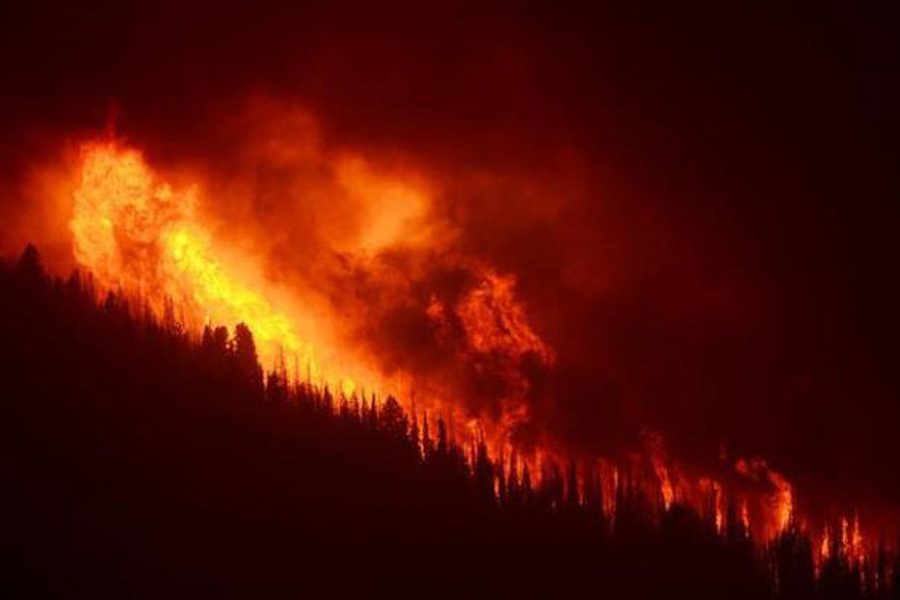Colorado Fires And Global Warming: Its Getting Hot
Colorado has had its history with wildfires and global warming isn’t helping. Here`s why
March 13, 2018
Colorado has had an awfully dry winter. But the effect of such a lack of moisture is starting to show this past weekend, as two fires have started, one in Fort Carson and one here in Colorado Springs. The fire’s exact causes are still unknown, but the fire in Colorado Springs was suspected to have started in a mulch pile at Rocky Top Resources, a business which offers “mulch, rock, soil, amendments, soil mixes, edging, boulders, timbers, fabric and much more”, according to their website. The fire was reportedly faster moving due to it easily spreading from mulch pile to mulch pile, in addition to it feeding off of high wind gusts, which hit a high of 52 MPH on Sunday.
Only 6 years ago, Colorado Springs and the surrounding area were devastated by the Waldo Canyon Fire, which destroyed 346 buildings and took 2 lives. The fire generated $453.7 million in insurance claims and burned 18,247 acres of land. The fire resulted in flooding problems in the following years, due to plant loss, making water easily run through it and take it down the mountain. The soil became hydrophobic,which causes water to easily travel down the mountains’ slopes and bring soil and debris down with it. A year later, the Black Forest Fire surpassed the Waldo Canyon Fire as the most destructive in Colorado’s recent history.
According to Sciencemag.org, fires are “occurring nearly four times more often, burning more than six times the land area, and lasting almost five times as long”. Natural changes and human interaction including land use, mining, building, and climate change can all affect the likelihood of wildfires. According to publish.csiro.au, national parks such as Yosemite National Park have seen an increase in wildfires as well, and they are protected from human interaction. There is no mining or clearing of national parks, but they are seeing a spike in the rate of wildfires. This suggests that climate change presents a bigger role in the likelihood of wildfires.
Experts say that wildfires are projected to spike in moist and forested area while, surprisingly, dry grass areas are projected to have none at all. According to ucsd.edu, the areas would be less likely to even grow grass at all, due to the “intense aridity”. Without grass there would be nothing to burn, resulting in the drop of wildfires.
As the global temperature increases so do the rate of wildfires. We were shown 6 years ago how close to home a wildfire can get and we were reminded of it this past weekend. But taking extreme care in in fire safety and actively mitigating against fires can help to keep our wildfire risk to a minimum.


